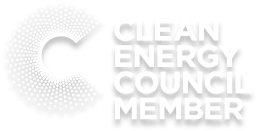The Australian Labor Government has introduced the Cheaper Home Batteries Program, a transformative initiative set to launch on July 1, 2025. This $2.3 billion program aims to make battery storage systems more affordable, helping Australian homes: The program offers a 30% upfront discount on eligible battery installations, potentially saving households thousands of dollars.
For Australian solar companies, this is a golden opportunity to attract customers and boost website traffic by promoting this exciting incentive. Below, we dive into the details of the program, its benefits, and how your customers can take advantage of it to reduce energy costs and contribute to a sustainable future.
Australia Cheaper Home Batteries Program Overview
The Cheaper Home Batteries Program is a federal initiative designed to accelerate the adoption of battery storage across Australia. Key details include:
- Name: Cheaper Home Batteries Program
- Start Date: July 1, 2025
- Funding: $2.3 billion
- Objective: Install over one million new batteries by 2030, reducing energy bills and promoting renewable energy use.
The program is delivered through the Small-scale Renewable Energy Scheme (SRES), which has successfully subsidized solar panels for over a decade. It is uncapped, meaning there’s no limit on the number of rebates available, ensuring broad access for households, small businesses, and community facilities.
Eligibility and Requirements
| Requirement | Details |
|---|---|
| Battery Capacity | 5–50 kWh usable capacity (systems up to 100 kWh eligible, rebate capped at 50 kWh) |
| Solar Connection | Must be connected to new or existing rooftop solar systems |
| Installation Date | Batteries installed before July 1, 2025, are eligible if not switched on until the program starts (solar systems can be activated earlier) |
| Accreditation | Installers must be accredited; batteries must be approved by the Clean Energy Council |
| VPP Capability | Batteries must be Virtual Power Plant (VPP)-ready, though joining a VPP is optional |
Additional eligibility notes:
- Not Means-Tested: Open to all income levels.
- Double-Dipping Allowed: Can be combined with state-based rebates.
- One Rebate per Property: Multiple properties may qualify separately.
- Existing Battery Owners: Can install another battery and qualify.
- Off-Grid Systems: Eligible for the rebate.
Rebate Details
The program offers significant financial incentives:
- Discount: Up to 30% on the installation cost of eligible battery systems.
- Maximum Rebate (2025): $372 per kWh of usable battery capacity, approximately $330 per kWh after fees.
- Example: For a 10 kWh battery, the rebate is $3,720, with a likely cost reduction of ~$3,300.
- Duration: Rebate decreases annually, ending December 31, 2030.
Visit our contact page to schedule your free consultation.
For a typical 11.5 kWh battery, the rebate could save households around $4,000, making battery storage more accessible than ever.
Who Can Access the Rebate?
The program is inclusive, supporting:
- Households: Homeowners with new or existing solar panels can qualify.
- Small Businesses: Retail, offices, and other businesses can reduce energy costs.
- Community Facilities: Sports clubs, libraries, and community centres are eligible.
Benefits for Households
The Cheaper Home Batteries Program offers multiple advantages:
- Cost Savings:
- Households with existing solar: Save up to $1,100 annually on power bills.
- New solar and battery systems: Save up to $2,300 per year, potentially 90% of a typical family’s electricity bill.
- Energy Independence: Store excess solar energy to use during peak demand periods, reducing reliance on the grid.
- Environmental Impact: Supports Australia’s renewable energy targets and reduces greenhouse gas emissions.
- Grid Benefits: Widespread battery adoption reduces peak demand, potentially lowering electricity prices for all consumers.
How Much Can You Save on Your Electricity Bill?
The program offers substantial savings:
- Upfront Savings: A 30% rebate, up to $372 per kWh, translates to ~$4,000 for a 11.5–13.5 kWh battery or ~$3,336 for a 10 kWh system.
- Annual Savings:
- Households with existing solar: Up to $1,000 per year.
- New solar and battery systems: Up to $2,500 per year, potentially covering 90% of a typical family’s electricity bill.
- For a 13.5 kWh system: $700–$1,500 annually.
These savings enhance energy independence by storing solar energy for peak demand, reducing reliance on the grid.
By integrating with VPPs, households can also export excess energy to the grid, further reducing payback periods, which can now be under 5 years with proper system sizing.
Can the Rebate Be Combined with State Incentives?
Yes, the Cheaper Home Batteries Program rebate can likely be combined with state incentives, allowing households to stack savings. According to reliable sources, the federal policy is designed to work alongside existing state-based schemes, enhancing affordability.
For example:
- Victoria (VIC): The Solar Homes Program, expanded in 2024, includes battery rebates of up to $3,500 for eligible households installing battery storage systems. This state incentive can be stacked with the federal Cheaper Home Batteries Program rebate, significantly lowering upfront costs. Households must meet specific criteria, such as income thresholds and installation by approved providers, to qualify. Combining these rebates can make battery storage highly affordable for Victorian homeowners.
- Western Australia (WA): In 2024, WA introduced a battery storage subsidy under the Distributed Energy Resources program, offering rebates of $5,000–$7,500 based on battery capacity and household type. This incentive is compatible with the federal rebate, allowing households to maximize savings. Additionally, WA’s program encourages Virtual Power Plant (VPP) participation, which aligns with the federal requirement for VPP-ready batteries, potentially unlocking further financial benefits through energy exports.
- New South Wales: A state battery subsidy introduced in November 2024 can be combined with the federal rebate, significantly reducing the cost of solar battery installations. Additional payments are available for joining a Virtual Power Plant (VPP).
- Queensland: Past state programs, such as the Battery Booster, offered rebates of up to $4,000. The federal Labor Party has indicated that its policy would complement such state schemes, suggesting compatibility.
- Other States: The federal rebate is intended to be stackable with state-based incentives where available. Homeowners should verify with state energy authorities or installers to confirm eligibility.
To ensure compliance, households should work with accredited installers who can navigate both federal and state requirements. Stacking rebates can substantially lower out-of-pocket expenses, making battery storage more accessible.
Community and Small Business Support
The program extends benefits to small businesses and community facilities:
- Small Businesses: Systems up to 50 kWh (total size up to 100 kWh) help reduce operational costs, especially for businesses with high peak-hour energy use.
- Community Facilities: Non-profits like sports clubs and libraries can lower energy expenses, supporting sustainability and community operations.
This support makes battery storage accessible, promoting energy resilience across diverse sectors.
Virtual Power Plant (VPP) Ready: What It Means
VPP-ready batteries are designed to integrate with Virtual Power Plants, which remotely manage batteries to supply power to the grid during peak demand. Key points:
- Definition: VPP-ready batteries can be controlled to export surplus energy, enhancing grid stability.
- Benefits (participation optional):
- Additional Income: Earn credits or income from energy exports.
- Efficiency: Optimized battery performance maximizes savings.
- Grid Support: Reduces peak demand, potentially lowering electricity prices.
- Requirement: All eligible batteries must be VPP-ready, ensuring compatibility with future grid innovations
How to Participate in the Cheaper Solar Battery Program
To take advantage of the program, customers should:
- Verify Eligibility: Ensure the battery system meets capacity, solar connection, and VPP requirements.
- Choose an Accredited Installer: Work with professionals accredited by the Clean Energy Council to ensure compliance.
- Plan Installation Timing: If installing before July 1, 2025, keep the battery off until the program starts to qualify for the rebate.
- Explore State Rebates: Combine with state incentives, such as Western Australia’s $5,000–$7,500 rebates, for maximum savings.
- Consult Experts: Contact your solar company for tailored advice on system sizing and VPP integration.
Why Act Now?
The Cheaper Home Batteries Program is a limited-time opportunity, with rebates decreasing annually until 2030. Early adopters can:
- Maximize savings with the highest rebate rates in 2025.
- Avoid potential price increases as demand for batteries grows.
- Secure a system that meets long-term energy needs, as only one rebate is available per property.
Potential Challenges and Considerations
While the program is promising, some challenges have been noted:
- Market Disruption: In Western Australia, a similar state rebate announcement led to canceled orders as customers waited for subsidies, impacting installers.
- Price Inflation Concerns: Some worry that installers may raise prices in anticipation of the rebate, though competition in the solar industry may mitigate this.
- Policy Uncertainty: The program’s implementation depends on Labor’s re-election in May 2025, though it was costed into the 2025–26 federal budget.
How SolarMiner Can Help
At SolarMiner, we’re committed to helping you maximize the benefits of the Cheaper Home Batteries Program and state incentives. Our services include:
- Free Consultations: Book a no-obligation consultation to explore how federal and state rebates can benefit you.
- Rebate Eligibility Assessments: We assess your property to ensure compliance with both federal and state requirements.
- Expert Installation: Our accredited professionals ensure your system meets all criteria, from Clean Energy Council approval to VPP readiness.
- State Incentive Guidance: We provide tailored advice on combining federal rebates with state schemes, such as those in New South Wales or Queensland.





